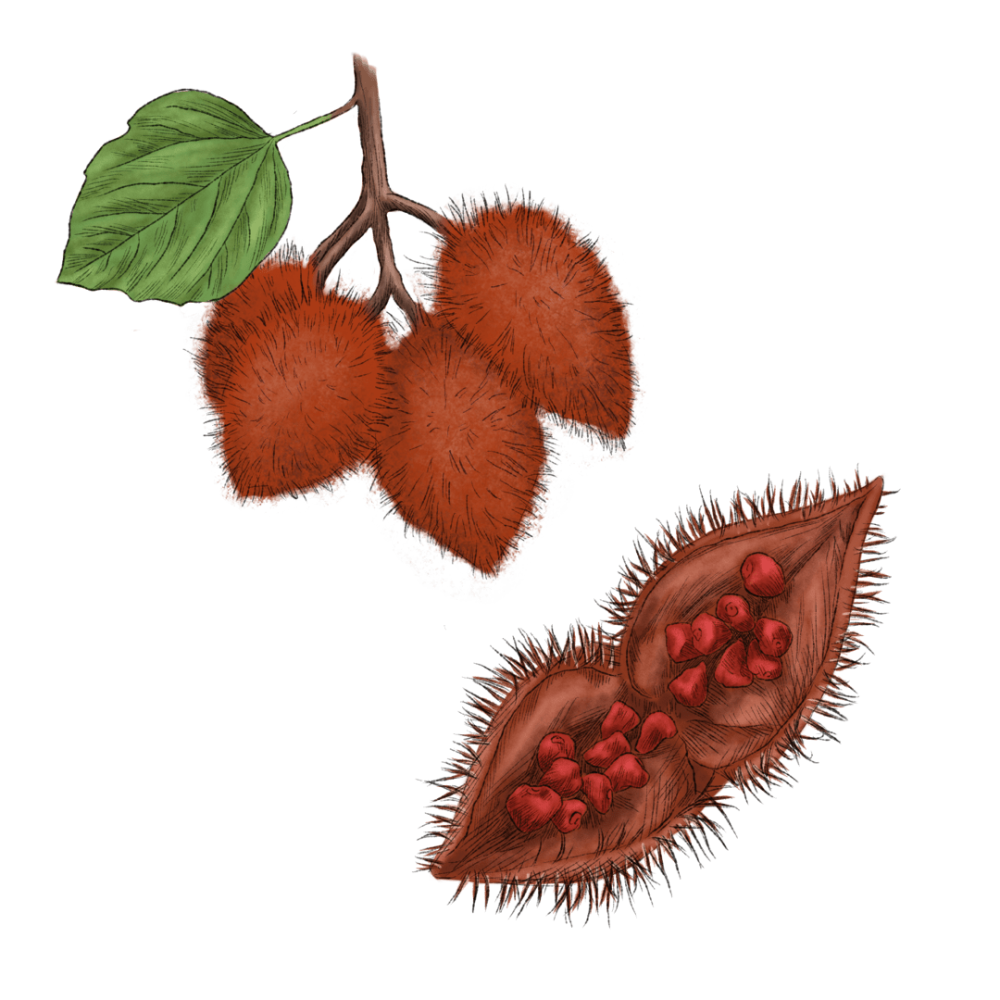Annatto

Latin Name: Bixa orellana
Other Names: annatto seed, achiote
Uses: flavoring, food coloring
What is annatto?
Annatto is the reddish orange seed from the achiote tree, which is powdered or ground into a paste and used to flavor foods in various Latin American and Caribbean cuisines and, industrially, to color foods and cosmetics yellow or orange. The achiote tree is in its own family (the Bixaceae), producing a pink rose-like flower and spiny seed pods filled with the annatto seeds. Indigenous people in Latin America also use the seed to make body, face, and hair paint.
Why is annatto healthy?
Annatto seeds don’t have much nutritional value, but the seed, leaf, and fruit of the plant have been used medicinally for centuries. Studies looking at its efficacy in treating diseases like hepatitis, malaria, and enlarged prostate have been inconclusive. Annatto contains several antioxidants such as carotenoids, flavonoids, and tocotrienol which can help prevent chronic diseases by neutralizing harmful free radicals. Annatto may affect how the liver breaks down certain medications, so check with your doctor for contraindications.
What does annatto taste like?
Annatto seed has a slightly pungent and spicy flavor, similar to pepper or nutmeg. The earthy aroma somewhat resembles the smell of modeling clay (and prepackaged achiote paste has a similar texture to clay).
How do I use annatto?
Combine ground annatto seeds with other Latin and Caribbean spices to make a sazón blend for giving foods a vibrant orange color (like saffron) and slightly smoky flavor. It’s usually powdered or ground into paste which is then fried in fat to release the color; try using it in stews, soups, and rice dishes. The whole seed form will retain its flavor the longest, but you’ll need to grind it before you can cook with it.
What does annatto pair well with?
Annatto is mainly used for its color since it isn’t usually used in high enough quantities for the flavor to be very noticeable. It’s classically used with spices like cumin, coriander seed, Mexican oregano, clove, cinnamon, allspice, black peppercorns, and charred garlic to make achiote paste for seasoning meats and rice pilafs. It’s also wonderful with tomatoes, peppers, potatoes, onions, bitter Seville oranges, limes, and red onions, as well as the aroma of banana leaf. It’s also widely used in Filipino and Chamorro cooking.
Where does annatto grow?
The achiote tree is native to the tropical areas of Central and South America, but it was brought to the Caribbean, Africa, Southeast Asia, and South Asia by Spanish and Portuguese colonizers in the 16th and 17th centuries for its use as a dye. Today, Mexico, Peru, and Brazil are the top producers of annatto seed.
How do I buy annatto?
You can buy annatto either in whole seed form, paste (typically sold as achiote), or infused in oil. The whole seeds are usually available in spice shops and better-stocked grocery stores; you can find annatto in any form in Latin mercados and larger/big box grocery stores that serve a Latinx clientele.
Fun annatto fact:
Achiote seeds are the only source of the plant pigment bixin, which is one of the most widespread natural dyes used for coloring food and cosmetics. Before modern artificial dyes, it was the coloring used in many cheesed-flavored snack foods, and annatto seeds can be added to chickens’ feed to help make their eggs’ yolks a darker orange color.